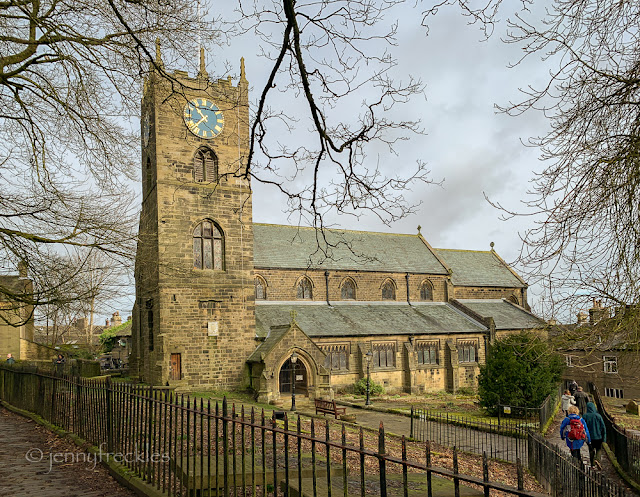Haworth was busier than it looks from my photos (though nothing like as busy as it would be on a summer's day). We had an early lunch and I think most of the visitors were in the many cafés, tea shops and pubs when we wandered down Main Street. I'm always fascinated by the variety of architectural styles, some Georgian, some Victorian. Houses and shops have been squeezed in between the older weavers cottages and have seen many alterations over the years. When the Brontës lived in Haworth, the village must have been a building site, as homes were built to accommodate the workers needed at the expanding textile mills in the valley.
Sadly, it was a notoriously unhealthy place, due to a poor water supply and rudimentary sanitation, not to mention the pollution from industry and even seepage from the churchyard graves, which are above the village. In the mid 1800s, infant mortality was horrifying. 41% of children died before they were six years old and the average life expectancy of an adult was 44. (Indeed, all of Patrick Brontë's six children, including the literary sisters, died before they were 40.) It's sobering to walk the streets nowadays and reflect on that.
The building in the photo above, at the corner of Changegate and West Lane, was once the Yorkshire Penny Bank and later the Tourist Information Centre. Even touristy Haworth has lost its Information Centre, thanks to Council budget cuts.
There are numerous small alleys and courts like the one below, reflecting how the village grew rapidly and piecemeal in the 18th and 19th century. Some of these cottages belonged to handloom weavers and have long rows of mullioned windows on the top floor at the front, which allowed light into the weaving rooms.



















































